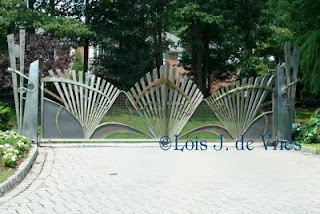Mill Creek Canyon Moose

I began my ascent in Mill Creek Canyon. Anyone who has ever suffered from altitude sickness will understand that the sensible way to arrive at our destination in Utah (altitude 8,300 ft.), was to ascend the Wasatch Mountains a little at a time. I’d never gotten sick in Salt Lake City (altitude 4,300 ft.), so we spent a day there. Next day, we bought our lunch and drove about half way up Mill Creek Canyon to eat in a picnic area. Higher and higher we climbed, cautiously pulling off and taking in the view whenever I felt a little “funny.” It was hard to say whether this was caused by actual altitude problems or anticipatory anxiety, until I got “something like a headache,” but that, too passed. At the 7,000-foot pull-off there were a lot of cars in the parking lot and a sign that said Congested Area Ahead. It turned out that the “top” was just a short distance further on, at 7,600 feet. Guess what the magic number is? Nothing I had read about altitude sickness told me I would temporarily...

